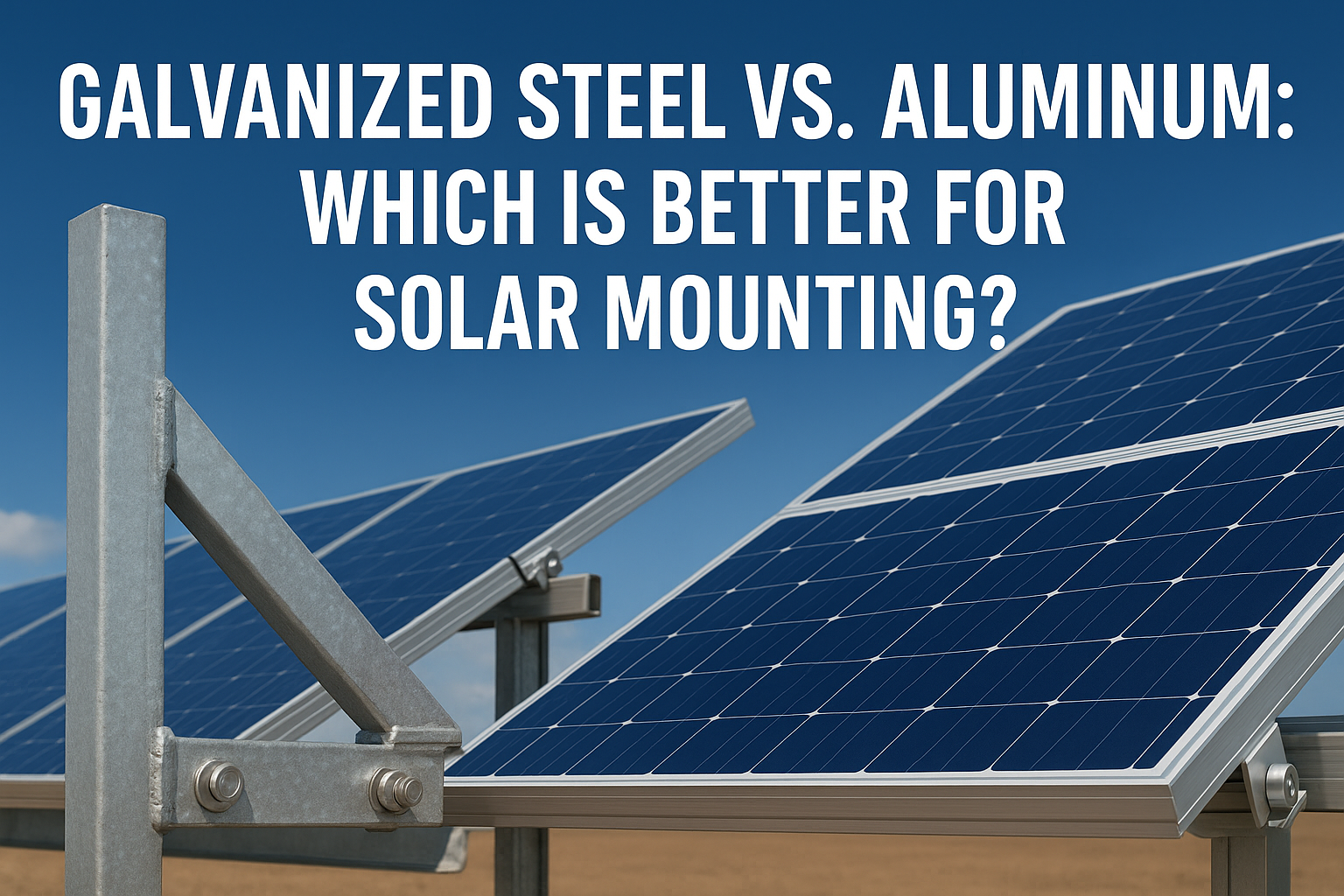When it comes to solar energy, most people focus on panels and inverters. But the mounting system — the structure that holds panels in place — is just as critical. It determines how long your system lasts, how well it resists weather, and even how cost-effective the project is over its lifetime.
Two of the most common materials for solar mounting are galvanized steel and aluminum. Both have their strengths and limitations, but which one is the right choice for your solar project? Let’s break it down.
Galvanized Steel Solar Mounting
Advantages
-
Exceptional Strength & Load Capacity
Galvanized steel structures can withstand heavy wind loads and large module arrays, making them ideal for utility-scale projects. -
High Durability with Zinc Coating
The galvanization process protects steel from rust and corrosion, extending lifespan even in challenging climates. -
Cost-Effective for Large Projects
Steel is generally less expensive than aluminum, especially for bulk orders, lowering the upfront cost per MW. -
Flexibility in Customization
Easy to cut, weld, and shape for customized solar mounting structures.
Limitations
-
Heavier Weight – Increases logistics and installation effort compared to aluminum.
-
Maintenance in Coastal Areas – While zinc coating protects well, long-term exposure to saltwater may require additional anti-corrosion measures.
Aluminum Solar Mounting
Advantages
-
Lightweight & Easy to Install
Aluminum mounting systems are much lighter than steel, reducing shipping and installation costs. -
Excellent Corrosion Resistance
Naturally resistant to rust, making it ideal for coastal or high-humidity environments. -
Aesthetic Appeal
Sleek, modern appearance preferred for residential rooftops and visible installations. -
Low Maintenance
Requires minimal upkeep once installed.
Limitations
-
Lower Strength Compared to Steel
Aluminum can bend under heavy loads, making it less suitable for large solar farms or heavy panels. -
Higher Cost
Per kilogram, aluminum is more expensive than steel, impacting large-scale project budgets. -
Thermal Expansion
Aluminum expands and contracts more with temperature changes, which can stress joints over time.
Head-to-Head Comparison: Steel vs. Aluminum
| Factor | Galvanized Steel | Aluminum |
|---|---|---|
| Strength & Load Capacity | Very High | Moderate |
| Corrosion Resistance | High (with galvanization) | Very High (natural oxide layer) |
| Weight | Heavy | Lightweight |
| Cost | Lower | Higher |
| Best Applications | Large solar farms, industrial & commercial projects | Rooftops, coastal areas, residential installs |
| Maintenance | Moderate | Very Low |
Which Material is Best for Your Solar Project?
-
Choose Galvanized Steel if:
You are developing utility-scale solar farms, industrial rooftops, or projects requiring high structural strength at a lower cost. -
Choose Aluminum if:
You are focusing on residential or small commercial rooftops, projects near the coast, or where lightweight installation is critical.
In many cases, EPC contractors use a hybrid approach — steel for ground structures and aluminum for rooftop frames.
Expert Insight: Long-Term ROI
While aluminum may look attractive due to its lightness and rust resistance, galvanized steel often delivers better ROI in large projects due to its strength, lower cost, and long service life.
For developers, the choice often comes down to:
-
Budget vs. Aesthetics
-
Strength vs. Ease of Handling
-
Project Scale & Environment
